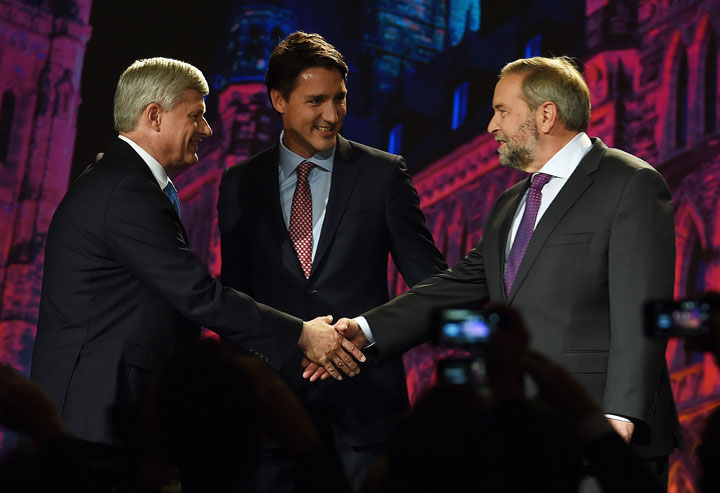For those who are troubled by any of the assorted promises made by the various party leaders in the election campaign, they shouldn’t be concerned.

If the polls published in recent days prove to be true, none of the parties will achieve majority government status by capturing 170 seats in the new parliament, and therefore will be unable to unilaterally implement their policy agenda.
The positions announced by Stephen Harper, Justin Trudeau, and Tom Mulcair, are nothing but opening statements for negotiations in the forthcoming 42nd parliament.
The safest prediction about that impending scenario, is that Prime Minister Harper is unlikely to be a serious party to the bargaining.
Whether or not the Conservatives win the largest number of seats, both Trudeau and Mulcair have stated categorically that they will not prop up a minority Harper government.
In other words, should the Conservatives take the most seats, a Harper government would soon lose a vote of confidence and be forced to resign. That basically leaves the Liberals and New Democrats to patch things up over bruised feelings from the campaign, and negotiate some sort of arrangement.
READ MORE: Half of voters support NDP-Liberal coalition, but could it work?
This needn’t lead to a coalition, but there is a clear template provided by the Liberal-NDP accord following the 1985 Ontario election.
The results of that vote led to a minority parliament including 52 Conservatives under Frank Miller, 48 Liberals led by David Peterson and 25 New Democrats under Bob Rae, with the Liberals having a slight edge in popular vote over the Conservatives. It might be added that this election marked the end of a 42 year-long reign of Conservative government in the province.
The relative difference both in seats and popular vote between the Liberals and New Democrats is not as great this time, but if the Liberals are able to sustain their superior position during the campaign’s remaining days, parliamentary tradition suggests they would be given the opportunity to form a government.
- What is a halal mortgage? How interest-free home financing works in Canada
- Ontario doctors offer solutions to help address shortage of family physicians
- Capital gains changes are ‘really fair,’ Freeland says, as doctors cry foul
- Budget 2024 failed to spark ‘political reboot’ for Liberals, polling suggests
Nonetheless, the NDP under Mulcair would have substantial bargaining leverage, both regarding policy priorities, and the question of a possible coalition, should Mulcair want it.
A cautionary constraint for the New Democrats should they end up with fewer seats than the Liberals, is that junior partners in these relationships tend not to fare well in subsequent elections. That certainly is what occurred to Bob Rae’s New Democrats following the above described arrangement, as well as David Lewis’ New Democrats after supporting the Pierre Trudeau government between 1972-74, and more recently to the British Liberal Democrats in the United Kingdom election earlier this year.
This polling evidence that no party is within shooting distance of a majority government, lessens the need to consider strategic voting in 2015. It might be remembered however that organized campaigns for strategic voting have had mixed success in the past, because they require constituency-specific knowledge of voting history, where adjacent ridings might suggest different parties are the best choice to defeat a third. This is what occurred in 1999, when there was a campaign for strategic voting to defeat the Mike Harris provincial government. As it happens, if the election outcome indicated above should occur on Oct. 19, there might never again be a need to consider strategic voting in the country.
A Liberal-NDP accommodation would not agree on all issues, probably including the Trans-Pacific Partnership. However one policy that both parties have supported is election reform. There are many formulations that could be considered in achieving this, but whether it is a preferential ballot ranking choices, single transferable vote, or some variation of proportional representation, each would obviate the concern that supporting a smaller party would be a wasted vote. Accordingly, this election might well mark the end of the “first past the post” system in Canada.
Barry Kay is a politics professor at Wilfrid Laurier University, a contributor to Global News’ decision desk and a results analyst.



Comments